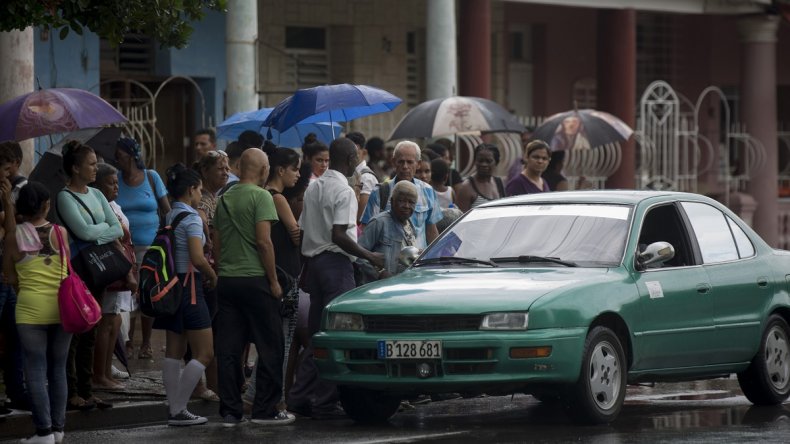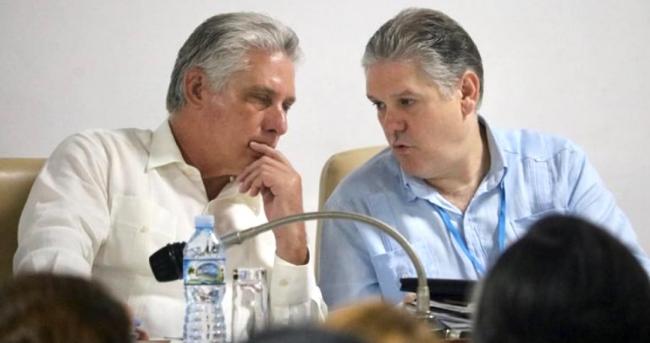Cuba is the only country in the Americas that does not publish its poverty index. Nor does it publish the Gini or Palma inequality indexes, nor can we find in the official figures published by the ONEI the minimum wage, or the cost of basic groceries in Cuba. In February of 2019 the Cuban Government posted on the CEPAL portal a report on its achievement of the Sustainable Development Goals for 2030 in the country, in which it claimed that only 6.8% of the entire population, and just 4.6% of the population in the cities, lived under "precarious conditions."
These fallacious figures are produced by manipulating the indicators in three ways.
- The poverty indicator is absent from the report, but "extreme poverty" appears, which is undefined; that is, the population that does not have access to more than three indicators of multifactorial poverty. The report does not include its definition of poverty and how it differs from extreme poverty, so as to conceal its manipulation of the figures.
- The Cuban government rejects the international standard of measuring poverty by monetary income (1.90 dollars daily), stating that it is not applicable in the Cuban case due to the people's rights to subsidized health and education, culture and sports. This is a decision that does not accord with international standards; Cuba is the only government that rejects this indicator as a measure of poverty.
- In addition, the Cuban government reports annual per capita income of the GDP in dollars rather than Cuban pesos. With this currency and exchange distortion in the country, which forces the consumer to buy a currency similar to the dollar, the CUC, for 25 Cuban pesos (CUP), the real average per capita income comes to 627 CUP per month, which, at the current exchange rate, is a little over 25 dollars. The average per capita of $7,524 claimed by the Government in the aforementioned report, then, plummets to a real per capita of $300.96 per year.
This distortion of published statistics calls into question the Human Development Index; in the report the Government claims that Cuban ranks 73rd out of 193 countries, when, in fact, it is at the bottom in average per capita annual income, sharing 194th place with the Democratic Republic of the Congo.
Other multifactorial poverty indicators are distorted in the report:
In relation to housing, the State itself has recognized in writing that 40% of existing constructions need major repair. The aforementioned government report only refers to houses with dirt floors and without adequate roofs, but does not account for other serious problems affecting housing in Cuba.
According to official figures, more than a million people are homeless, a figure that regularly varies, evidencing the government's ignorance of the actual state of the housing problem in Cuba. Since 2014 work has been done on the national cadaster, but its results have not yet been published. According to information from March 2020, the survey of housing in urban areas has not been completed, and that of housing in rural areas was carried out back in 1992.
With regards to health, the report does not point out hospitals' poor infrastructure, the absence of medical specialists to send them on missions abroad, the shortage of medical supplies, and the intermittent absence of essential medications, in addition to the chronic lack of ambulances, making this right very precarious for most of the population.
With regards to drinking water, in 2015 the director of the Ministry of Hydraulic Resources declared that 50% of the water pumped by the national hydraulic system was lost due to broken pipes, another fact that does not appear in the recent evaluations released by this ministry.
Moreover, water is not potable in Cuba, according to international standards, so it requires purification by boiling and/or chemical filtration. And, according to official data, in 2018 only 13% of the population received water 24 hours a day. The rest is received on alternate days, for a few hours, or by tanker trucks.
On the official site of Cuba's Institute of Hydraulic Resources, only data from 2014 appear regarding the hydraulic infrastructure serving the population. According to this data, only 16% of the Cuban population has easy access to water, despite 74.4% having connections to the hydraulic system in their homes.
Regarding wages, another important indicator to consider when analyzing poverty, the minimum wage in Cuba is 16 dollars a month, the lowest in Latin America, edging out only Venezuela, at 3 dollars a month.
The ONEI does not publish the number of Cuban workers who receive the state minimum wage. While some budgeted sectors, such as education, government officials, health and party leaders, saw their salary increases due to the reform of July 2019, other sectors of state workers saw their salaries fall due to the rising cost of basic groceries: "This is the case of those related to fishing, agriculture, livestock, forestry and other commerce and service items."
Despite the nominal wage increases in the last 30 years, specialists like Professor Carmelo Mesa Lago have reiterated that wages in Cuba have not achieved the purchasing power they had in 1989, the pre-crisis year. According to this specialist real salaries, adjusted for inflation in 2019, represent just 46% of those in 1989.
And, according to figures from the ONEI, 35.6% of the working-age population is unemployed. This large percentage of people able to work but idle reflects a lack of incentives to do so, due to low wages.
Major wage reform has been announced in recent days, but the proposal, not yet applied, does not take into account the "dollarization" of food and hygiene products since the end of July this year in the country through magnetic cards with deposits made from abroad.
Food stores in Cuban pesos are out of supplies, and agricultural production is way down due to the structural problems of agricultural policies and the coronavirus pandemic. This places the population in a more precarious situation, as consumption is divided between Cubans who receive remittances and those who do not.
There have been many different estimates of the volume of remittances that reach Cuba, and there are no official figures, but the National Migration Survey, carried out in 2016 and 2017, shows that only 38% of the Cuban population has relatives abroad, temporarily or permanently, and not all of them regularly send remittances back to their country.
Faced with the absence of supply of food produced in the country as a result of misguided policies in the Cuban countryside, the impending wage reform could be diluted in an inflationary price spiral that undercuts the purchasing power of the new increases announced.
Neither does the importation of food seem to be possible to eliminate the food shortage, since the Covid-19 pandemic has drastically reduced revenue from tourism, remittances, and the sale of medical services abroad, which are the country's three fundamental sources of foreign currency.
Monetary income, a fundamental factor to gauge the level of poverty, according to international standards, is rejected by the Cuban government. The multifactorial poverty index, lacking three indicators - housing conditions, access to drinking water, and precarious access to food - demonstrates that the figures analyzed in the 2019 Government Report correspond to "extreme poverty" and mask the real magnitude of poverty in Cuba.
There are no official figures, but some Cuban economists have issued indirect estimates of a poverty rate of approximately 40-51% in the country.
The Human Development Index's average annual per capita income indicator, meanwhile, does not correspond to the reality in Cuba, where the Government reports it in dollars, and the exchange and monetary distortion in Cuba reduces it 25 times for consumers. An adjustment of the dollar to Cuban pesos would lower Cuba's Human Development Index score from position 73 to near the bottom of the international ranking.
It is imperative that the Cuban government publish the poverty and social inequality indexes. Without these essential indicators, it will not be possible to develop the public policies that are currently lacking to reduce and eradicate the widespread poverty affecting Cuba; poverty that includes several very precarious social rights in the country: the right to adequate food, decent housing, access to drinking water, quality medical care, pensions and social assistance allowing for a dignified existence, and a decent wage, according to the UN's international parameters.



